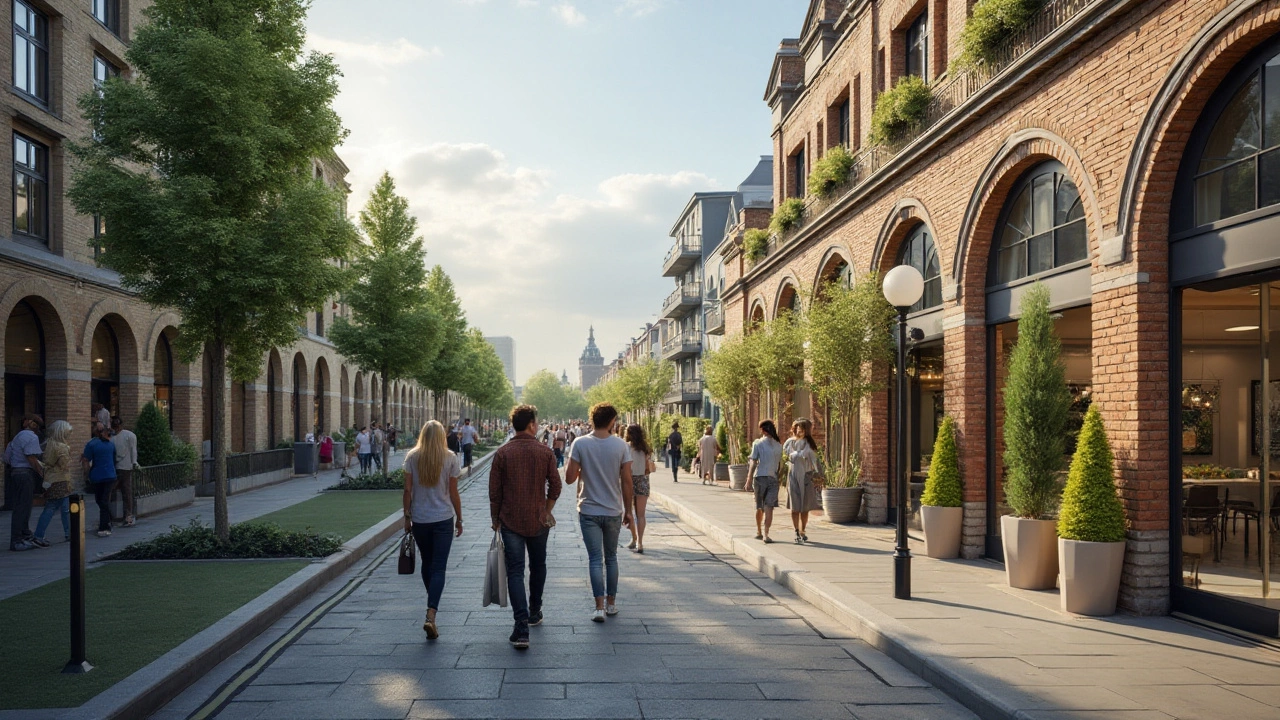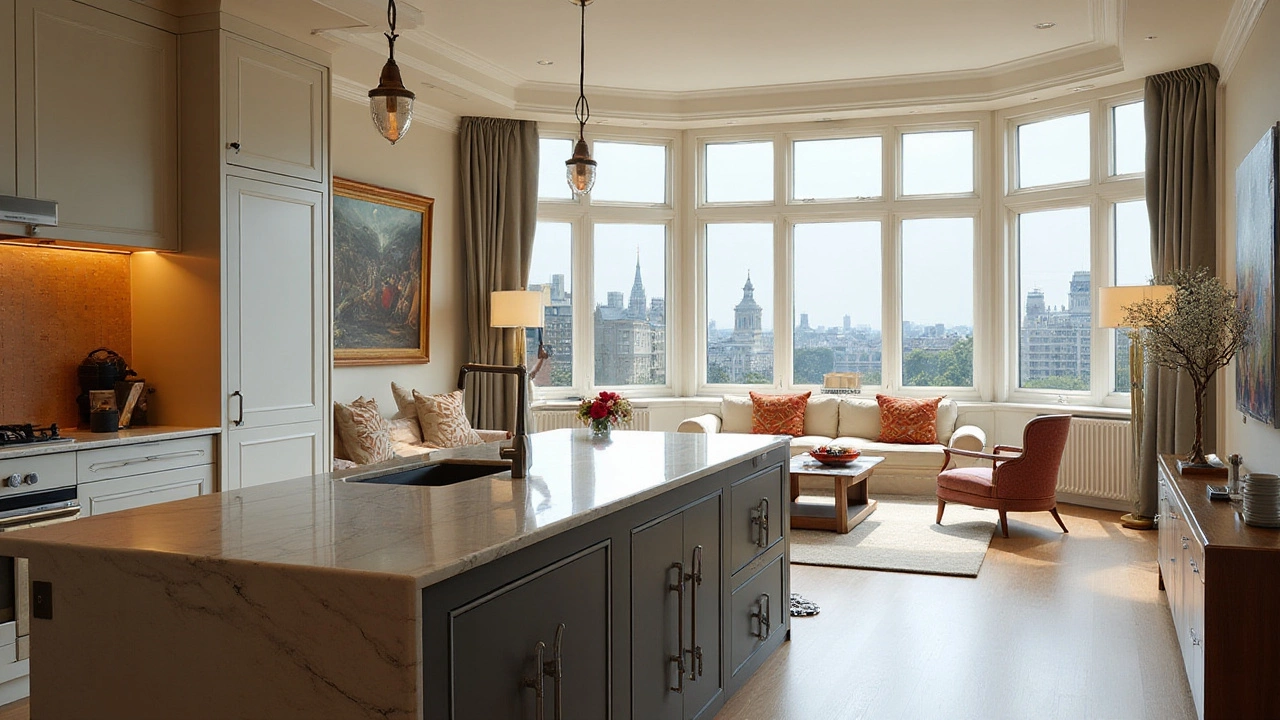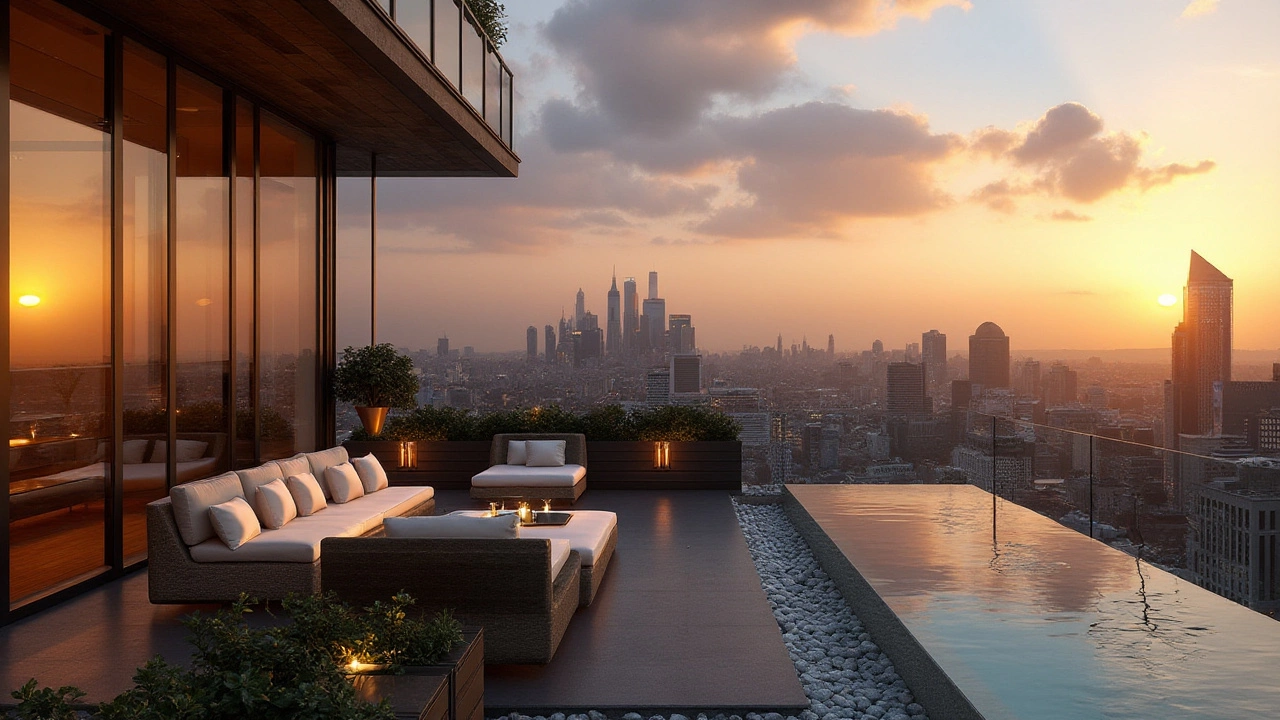Choosing between a luxury and a premium apartment can be a delightful yet challenging task. These terms often get tossed around interchangeably, but they carry varied implications for lifestyle and living standards.
Understanding their differences is key to making a choice that aligns with one's needs and desires. This guide sheds light on what each category offers, examining their unique benefits and potential drawbacks, so you can decide which style of living is the best fit for you.
Defining Luxury and Premium
In the realm of high-end real estate, the distinctions between what classifies as luxury apartments and what defines a premium residence can often blur, yet they are crucial. Right off the bat, luxury apartments are synonymous with opulence. They are designed to cater to those who expect the absolute best out of life. Typically, these accommodations are located in prime areas, offering not just a place to live, but a lifestyle of exclusivity, sophistication, and comfort. The focus here is not just on the space itself, but on the entire living experience. This often encompasses stunning views, meticulous attention to detail in design, and a suite of unparalleled amenities.
Premium apartments, on the other hand, may not have the extravagant flair that defines luxury residences, but they offer what can be described as a harmonious balance of comfort and quality. Still situated in desirable neighborhoods, these apartments are excellent for those who desire a step above the ordinary but might not seek the highest echelon of affluence. Here, practicality merges with high standards. Premium doesn't necessarily mean compromising on quality; it's about finding what matches one's lifestyle needs without going to the extreme.
Historical Context and Evolution
Interestingly, the terms 'luxury' and 'premium' have evolved over time. In the past, what was considered luxurious was highly exclusive and inaccessible to the vast majority. However, as cities expand upward and outward, what constitutes luxury is constantly being recalibrated. Developers have increased the breadth of what luxury can offer, elevating these spaces to new levels with advancements like smart home technologies and sustainable building practices. Conversely, the word 'premium' has adopted a more versatile meaning, accommodating a broader audience who values quality but may resist the confines of extravagance. This shift is reflected in the real estate market's continued segmentation, as seen by a survey from the National Association of Realtors, which found that 50% of homebuyers aged 25 to 35 prioritize intelligent design over size.Expert Insights
Addressing the nuances between these categories, real estate analyst Julia Lever of Dynamic Consulting Group notes,"Luxury isn't just about the highest price point or the fanciest amenities; it's about curating an entire sensory experience that resonates with the resident's lifestyle. Meanwhile, premium residences aim to offer exceptional quality across the board, making them a practical yet aspirational choice for many."This encapsulates the essence of what sets luxury and premium apart. Their different ethos guides the design process from the ground up, influencing not just the architecture but the community and service philosophy that surrounds it.
The distinction between luxury and premium can sometimes be subtle, yet essential depending on personal preferences and financial considerations. It ultimately boils down to the individual resident's values and lifestyle aspirations. By recognizing the unique elements each offers, those in the market can approach their decision with confidence, ensuring they not only choose a home but a lifestyle that aligns with their personal vision.

Amenities and Features
When it comes to choosing between luxury apartments and premium offerings, the amenities and features play a pivotal role in defining the living experience. Luxury apartments are synonymous with opulence, often providing amenities that go beyond simple comfort to offer residents an elevated lifestyle. Such developments frequently boast lavish features like high ceilings, floor-to-ceiling windows, advanced home automation systems, and top-of-the-line appliances. These designs aim to offer a perfect blend of aesthetics, technology, and functionality. Meanwhile, the finishing in high-end real estate tends to use superior materials such as marble, granite, and solid wood fixtures, offering spaces that are both beautiful and enduring.
A report by the National Multifamily Housing Council highlights the trend, "As expectations grow, luxury living spaces are setting benchmarks where convenience meets sophistication in the finest form."
Premium apartments, although similarly impressive, tend to focus more on practicality combined with a touch of elegance. They usually incorporate modern appliances, sleek designs, and smart usage of space to ensure maximum functionality. While they might not offer the same over-the-top luxury as their counterparts, premium apartments ensure that the essentials are of high quality and exceed usual market standards. Residents can often expect energy-efficient systems, high-speed internet connectivity, and integrated smart home devices that cater to a tech-savvy lifestyle.
Exclusive Amenities and Services
The amenities themselves can vary significantly and often define the difference in cost and appeal. High-rise upscale housing complexes often feature rooftop lounges, state-of-the-art fitness centers, and concierge services that instill a sense of exclusivity and offer a resort-like feeling right at home. Indoor heated pools, private movie theaters, and even pet-friendly parks are increasingly becoming standard in luxury apartments, meeting a growing demand for comfort and recreation all within the residential community.
In contrast, while premium apartments may lack some of these ultra-exclusive touches, they still offer an impressive array of facilities like business centers, hosting lounges, bike storage, and regular community events to create a closely-knit residential atmosphere. The focus here is enhancing community living while ensuring convenience, which appeals greatly to young professionals and small families alike.
Theoretically, both segments fulfill desires for a high-quality lifestyle, but preferences differ in what is considered essential. For some, the allure of upscale housing in a bustling urban area with access to extensive amenities justifies the added expense. For others, the balance of high-end flexibility and cost-efficiency offered by premium choices does the trick. At the decision point, considering individual lifestyle needs and desires can help guide one’s choice towards the perfect home.

Location and Environment
The location of any living space, whether labeled luxury or premium, significantly impacts the quality of life for its residents. Often, luxury apartments are situated in prime urban areas, presenting proximity to cultural landmarks, fine dining, shopping districts, and iconic city views, thus enhancing the living experience. These spots are meticulously chosen to offer prestige, convenience, and a zest of vibrancy. Locations like Manhattan's Upper East Side or London's Mayfair have long been synonymous with luxury living. Premium apartments, on the other hand, tend to be available in both bustling cities and quieter suburbs, strategically placed to provide ease of access to essential facilities like schools, parks, and hospitals without compromising on comfort.
When considering the environment, luxury settings often showcase lush landscapes and meticulous urban planning that not only add to aesthetic pleasure but also offer practical benefits such as increased privacy and a tranquil atmosphere. Many luxury complexes integrate sustainability practices into their designs, incorporating green roofs, solar panels, and rainwater harvesting systems. A study by Arcadis in 2022 highlighted that urban dwellers are increasingly prioritizing sustainability, which plays an essential role in attracting potential residents. However, premium locations aren't trailing far behind. These environments focus on creating a harmonious balance between city life and personal tranquility, often providing amenities like communal gardens and recreational spaces, which are highly valued by families and professionals alike.
An insightful piece by Forbes articulated, "The future of living is not just in the confines of plush interiors, but rather in the seamless coexistence of luxury and sustainability, meeting the discerning expectations of modern renters."
Accessibility is another pivotal aspect of the environment that distinguishes luxury from premium. Luxury apartments frequently boast extensive transport links, and many developers prioritize locations close to business districts and major transport hubs to offer unrivaled accessibility. That's beneficial for high-flying professionals who require frequent travel. In contrast, premium environments might emphasize residential neighborhood vibes with convenient yet less congested transport options, catering well to families and seniors who prioritize a quieter life without being too far from essential routes. That choice is ideal for those who seek a balanced lifestyle with a touch of indulgence.

Cost Analysis and Value
When diving into the world of high-end real estate, understanding the cost dynamics between luxury apartments and premium living options provides a critical insight into potential value for money. Typically, luxury apartments carry a heftier price tag due to their emphasis on exquisite design, prime location, and personalized services. These residences frequently feature opulent interiors, high-quality materials, and advanced technology tailor-made for those who spare no expense on comfort and status. Yet, the monetary consideration isn't solely for aesthetic appeal; it often includes top-notch security systems, 24-hour concierge services, and access to luxury amenities like spas and gyms, all contributing to a higher monthly maintenance fee compared to standard designs.
Conversely, premium apartments offer a more accessible entry point into the elite housing market, positioning themselves as a middle-ground between standard housing and full-blown extravagance. They prioritize practical value, providing quality and style without going beyond the essentials. Tenants here still enjoy modern facilities and good locations, yet without paying for intricate decorative details or extensive service staff presence. These characteristics typically lead to a lower investment cost and fewer ongoing fees, appealing to those who desire elevated living without the highest financial commitment.
A useful perspective comes from a 2023 report by the National Association of Realtors, which stated,
"While luxury homes can command up to 50% more in price compared to premium ones in the same city, the return on investment varies vastly based not just on location, but on the quality of amenities and residence upkeep."This underscores the importance of evaluating individual amenities and location-specific perks, like proximity to green spaces, transport hubs, or top schools for families, which often weigh into a resident's perceived value over time. Additionally, as cities evolve, premium areas can accrue value, sometimes shortening the gap between these property types in markets where demand consistently outpaces supply.
In deciding between these two high-end categories, future tenants should consider what intangible factors hold weight in their living experience. Is it peace of mind in high-class security, or the bliss of residing in a fusion of art and architecture? Perhaps it's the allure of exclusivity among the elite or simply efficient cost balance with refined taste that tips the scale. Each option's merits hinge on personal preference paired with a conscious understanding of the upscale housing market nuances. Budget allocation should reflect not only an immediate lifestyle choice but an investment strategy responsive to market trends and personal growth aspirations.
